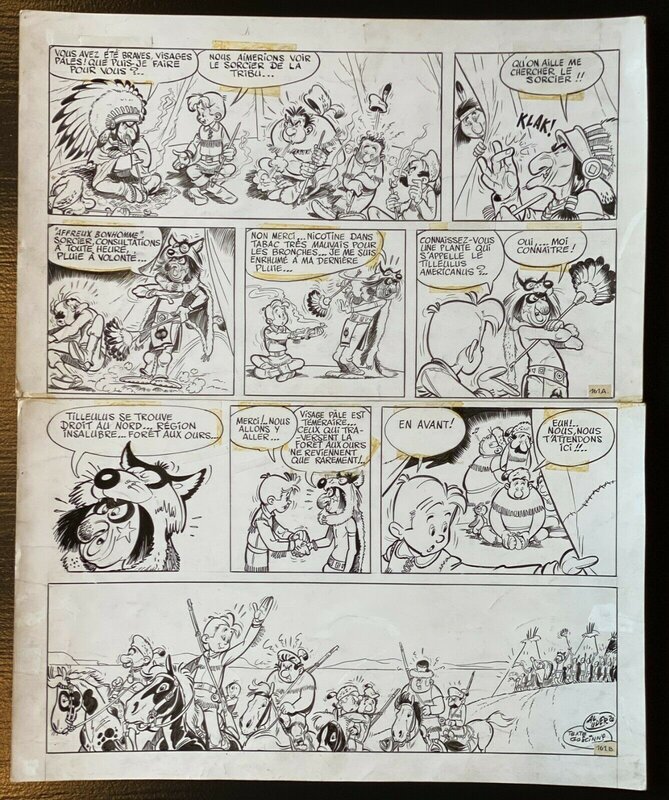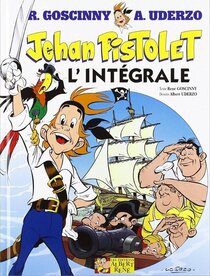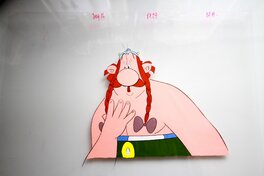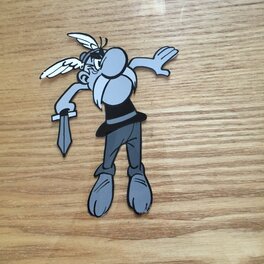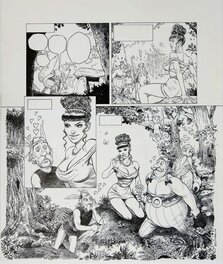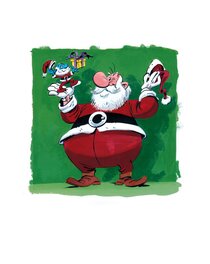In ASBCR 's collection
Jehan Pistolet (Pitt Pistol) planche 161 - Albert Uderzo
Ink
42 x 52.5 cm (16.54 x 20.67 in.)
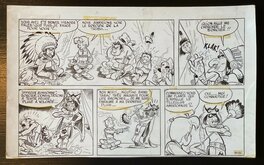
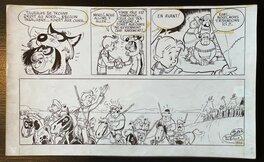
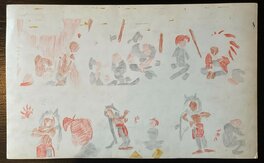
Description
Before Oumpah Pah (and of course Astérix) there were several series that proved Uderzo's growing magnificence as an artist. Led by Goscinny's scripts and dialogues, Jehan Pistolet is their first veritable artistic success. 4 adventures with 177 pages were created (Uderzo numbered them all way through instead of beginning anew with each book) - so 161 is very close to the end, when Uderzo is clearly at his first artistic peak and Goscinny's writing gets used to funny characterization and dialogues.
It's nice to see "typical" characters appearing here on this page that are very close to renderings in Oumpah Pah and of course "Asterix and the Great Crossing" (which was the base for the animation movie "Asterix in America"). It's especially nice to see a page with a larger panel - and though it looks like a perfect ending page, the adventure continues for 16 more pages! Signed by both (well, Uderzo signed for Goscinny) and 100 % pure Albert Uderzo with fluid perfect lines, as he had no assistant in the time before the Asterix success kicked in.
Uderzo also included his friend Goscinny as a character in this series, have a look if you can spot him right on this page!
As typical for these times, the page has color indications on the back; with this page, it's black pencil and color pencils instead of waterbased colors.
It's nice to see "typical" characters appearing here on this page that are very close to renderings in Oumpah Pah and of course "Asterix and the Great Crossing" (which was the base for the animation movie "Asterix in America"). It's especially nice to see a page with a larger panel - and though it looks like a perfect ending page, the adventure continues for 16 more pages! Signed by both (well, Uderzo signed for Goscinny) and 100 % pure Albert Uderzo with fluid perfect lines, as he had no assistant in the time before the Asterix success kicked in.
Uderzo also included his friend Goscinny as a character in this series, have a look if you can spot him right on this page!
As typical for these times, the page has color indications on the back; with this page, it's black pencil and color pencils instead of waterbased colors.
Publication
See also:
Jehan Pistolet
5 comments
To leave a comment on that piece, please log in
About Albert Uderzo
Albert Uderzo is a French cartoonist and scriptwriter of Italian origin. Along with scriptwriter René Goscinny, he created the Asterix series. Able to draw in very different styles (from the realism of Tanguy and Laverdure to the semi-realism of Asterix), his great sense of visual gags perfectly complemented René Goscinny's talents as a humorist.

